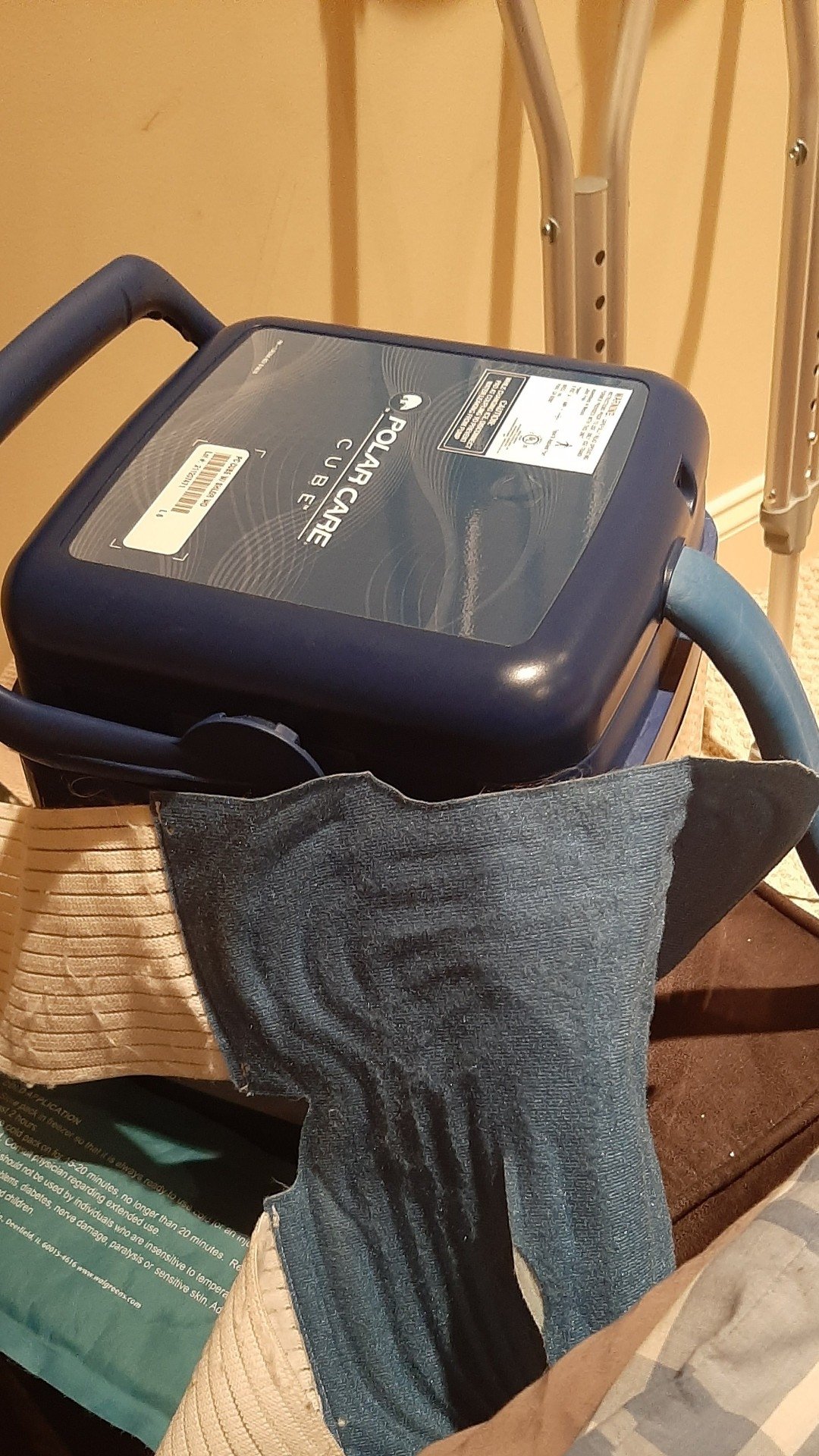I continue with icing every 2-3 hours, which really helps with the pain. Pain level is down to 5. Occasionally it climbs up to 8. With ice I can keep it controlled.
Progress
Walking around with crutches more.
Taking shower without the “Monster” (my brace)
I have to be very careful. I do sit during the shower and I do keep my leg straight. If someone isn’t feeling confident with their balance and strength in the other leg, wear the brace and cover it with a garbage bag.
Exercises
Flexing my foot to get blood flow going and stretching my calf.
Contracting my quads. (squeezing) At this point my quad looks so skinny! Difficult to see any contraction. I repeat it 12x holding the contraction for 3-4 seconds.
Contraction of my gluteus. (SQUEEZING) Holding for 5 sec, repeat 12x
Slow movement of knee flexion. Passively I move my knee towards me, lightly. Not pushing or forcing anything.
Some people might be ready at the end of the 2nd week to do gentle heel slides. Placing a rope or belt or longer pillow case around the foot and gently pulling towards you so the knee flexes. Not advisable to push through pain. LISTEN TO YOUR KNEE!
In my “Monster” brace I do TRY to do straight leg raise. It seems so difficult at this point. My groin keeps hurting. But I keep trying to do at least 3-4 moves.


Stitches are clean and covered with bandaids. 
Knee extensions
Roll up towel under the ankle and contract the quads to press the knee down to the floor. Repeat 12x, hold each squeeze for about 5sec.

Knee flexion by pulling the foot towards your butt. Wrap the foot with a jumping rope or long strap. Lie prone and pull with your hands holding the other side of the rope.
It could feel uncomfortable to be in this position. It could be easier to place something under your quad so the knee doesn’t touch the floor. Slightly folded towel.



14 days passed. Pain is manageable with Tylenol.
I repeat my exercises 3x a day. Right after the exercises I ice.
SEE YOU IN MY WEEK 3









